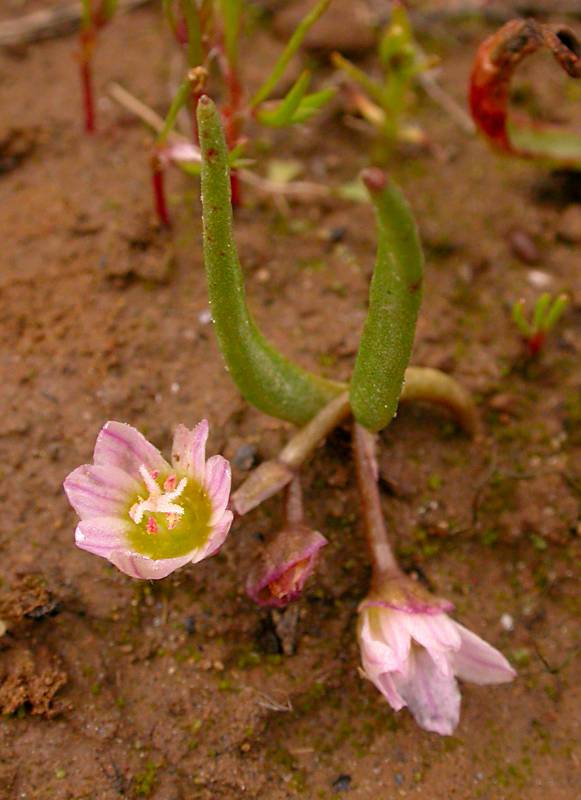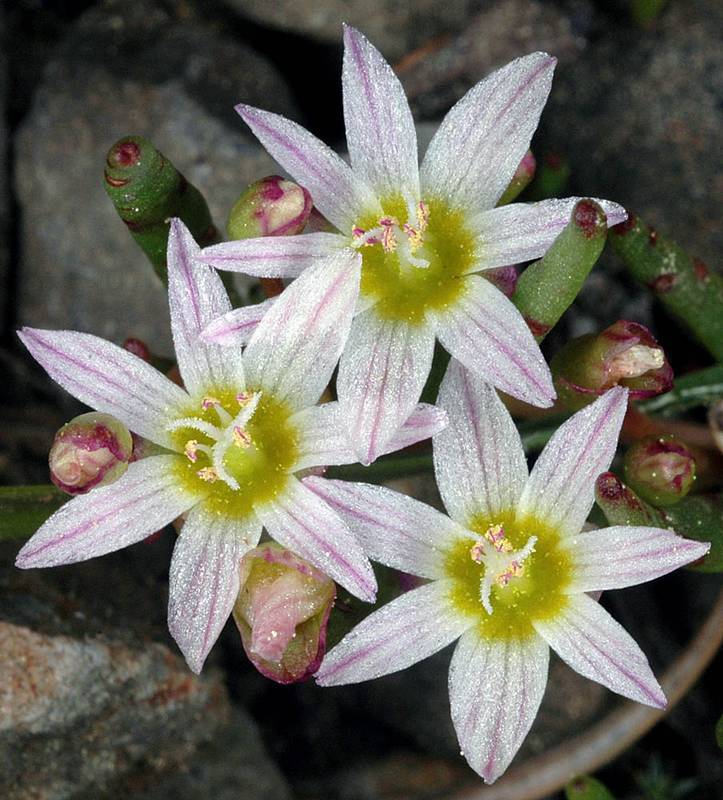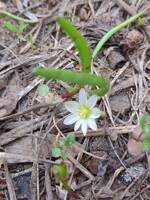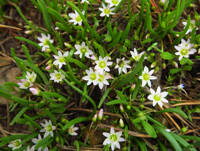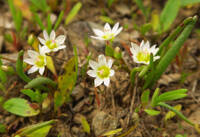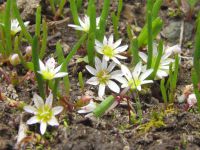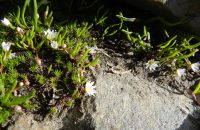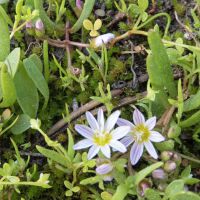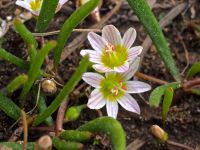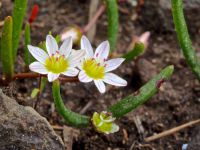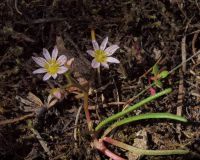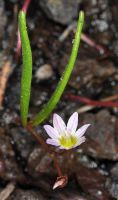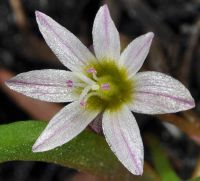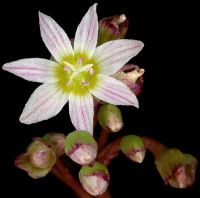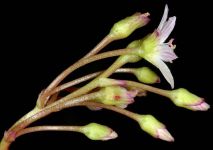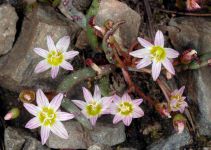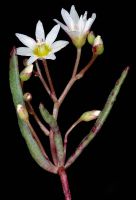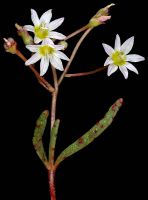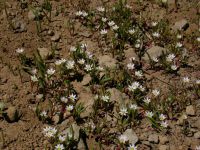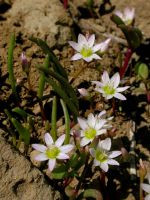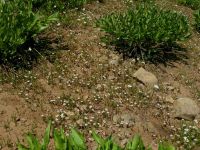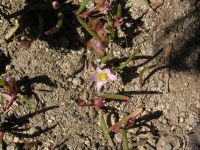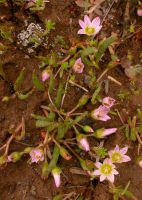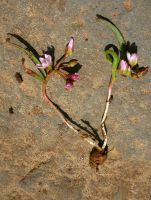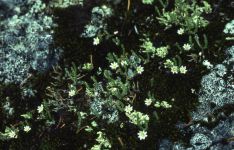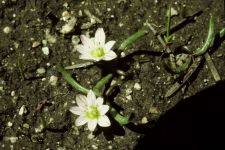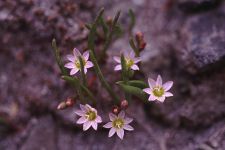Distribution: Occurring chiefly east of the Cascades crest in Washington; Washington to California, east to Montana and south in the Rocky Mountains.
Habitat: Open, usually sandy areas where vernally moist, ponderosa pine forests to subalpine meadows.
Flowers: May-August
Origin: Native
Growth Duration: Perennial
Conservation Status: Not of concern
Succulent perennial from a shallow, ovoid, tuberous root 3-9 mm. long and nearly as thick, the flowering stems 1-several, 3-10 cm. long, filiform below ground.
Basal leaves narrowly linear, up to 5 cm. long, lacking on flowering plants; cauline leaves 2-3, whorled, attached just above ground level, linear, 1-4.5 cm. long.
Flowers 2-25 in a bracteate, simple or compound, panicle-like inflorescence, each flower often with bracts similar to the calyx and immediately subtending it; pedicels 5-15 mm. long; sepals 2, oval, rounded, 2-3 mm. long; petals 5-9, white with pink venation or pinkish, 4-7 mm. long; stamens usually 5; style short, with 3-5 elongate stigmas.
Capsule about equal to the sepals.
Publication: Syn. Fl. N. Amer. 1: 269. 1897. 1897.
Erocallis triphylla (S. Watson) Rydb.
Oreobroma triphylla (S. Watson) Howell
PNW Herbaria: Specimen records of Lewisia triphylla in the Consortium of Pacific Northwest Herbaria database
WA Flora Checklist: Lewisia triphylla checklist entry
OregonFlora: Lewisia triphylla information
E-Flora BC: Lewisia triphylla atlas page
CalPhotos: Lewisia triphylla photos

